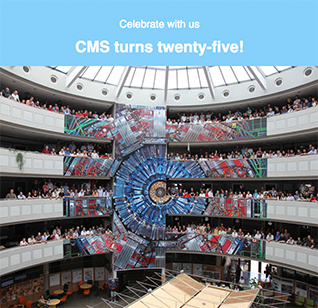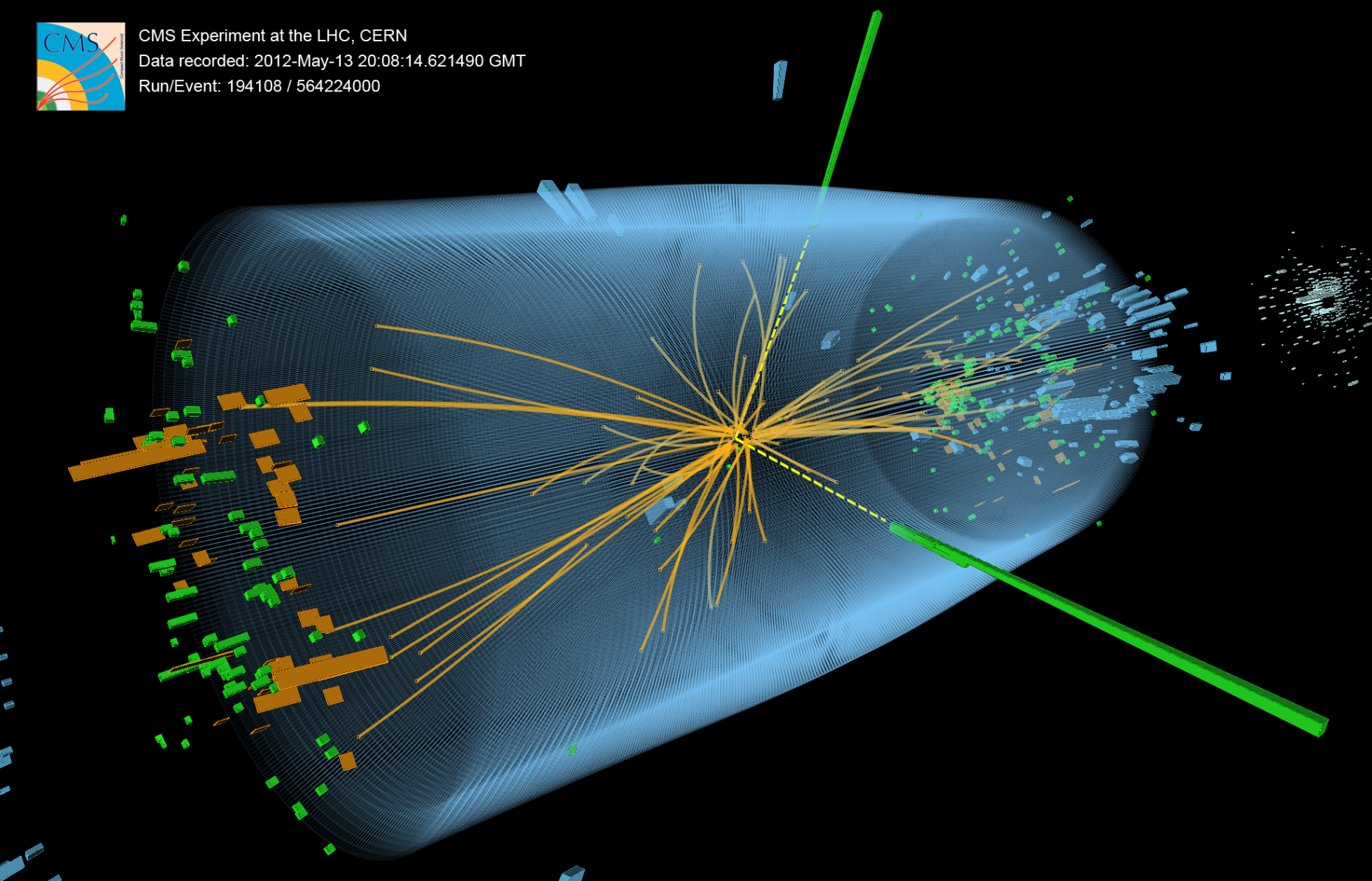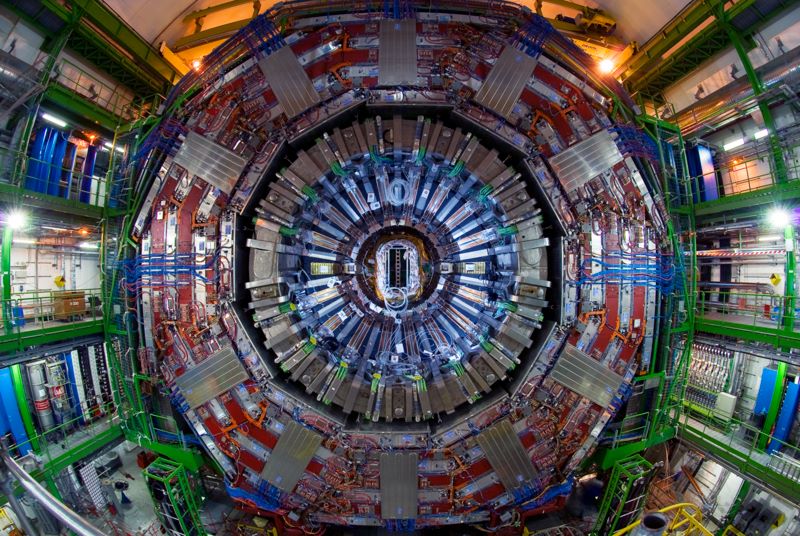CMS experiment at CERN LHC Colliders
external page http://cms.web.cern.ch
Responsible Professors
G. Dissertori, C. Grab , F. Pauss , R. Wallny; formerly also R. Eichler and H. Hofer
Status
in operation
Description
CMS, the Compact Muon Solenoid experiment in operation at the LHC, is a 12000 tons detector based on a large, high field superconducting magnet. There are over 2500 people from more than 150 Institutions (from 38 countries) involved in this experiment. Switzerland plays a major role in the design, financing, construction and operation of the experiment, as well as in its physics exploration. An example of an event display of a candidate decay of a Higgs boson to two photons is shown in the image on top.
The main technical challenges of the experiment are to maintain the required detector efficiency and accuracy in the presence of extremely high background levels, to handle the enormous volume of data collected, and to expeditiously analyse the data in order to extract the physics. To that extent, CMS is designed to find the Standard Model Higgs boson, to measure its properties, and also to scrutinize various currently unproven models of the ultimate structure of matter; CMS possesses the necessary versatility to uncover unexpected phenomena at LHC energies.
The hardware involvement of the IPP concentrates on the design, construction and maintenance of the electromagnetic crystal calorimeter, the manufacturing of the superconducting cables for the solenoid, the procurement of the magnet yoke structures, as well as on the construction of the central Si tracking detectors.
IPP substantially contributed and continues to play major roles in the physics exploration. Since the start of the LHC operation in 2009, members of IPP have substantially contributed to physics measuremens, in particular in topics concerning Higgs physics, top and beauty physics, as well as searches for signs of supersymmertry.
IPP persons are also actively involved in the CMS coordination.

Happy birthday, CMS!
October 2017 marks 25 years of the CMS Collaboration. On 1 October 1992, a "Letter of Intent" was submitted to the LHC Experiments Committee (LHCC), offically marking the formation of the CMS Collaboration. We have put together a small, standalone website that celebrates the achievements of the CMS Collaboration, allowing us to look at the many faces and places involved in our global endeavour: external page https://cern.ch/cms25
Please join us in celebrating 25 years of a fruitful collaboration and link to this website from your institutes pages or/and share this website on your social media channels. We have shared it on the CMS social-media channels: external page Twitter; external page Facebook; external page Google

